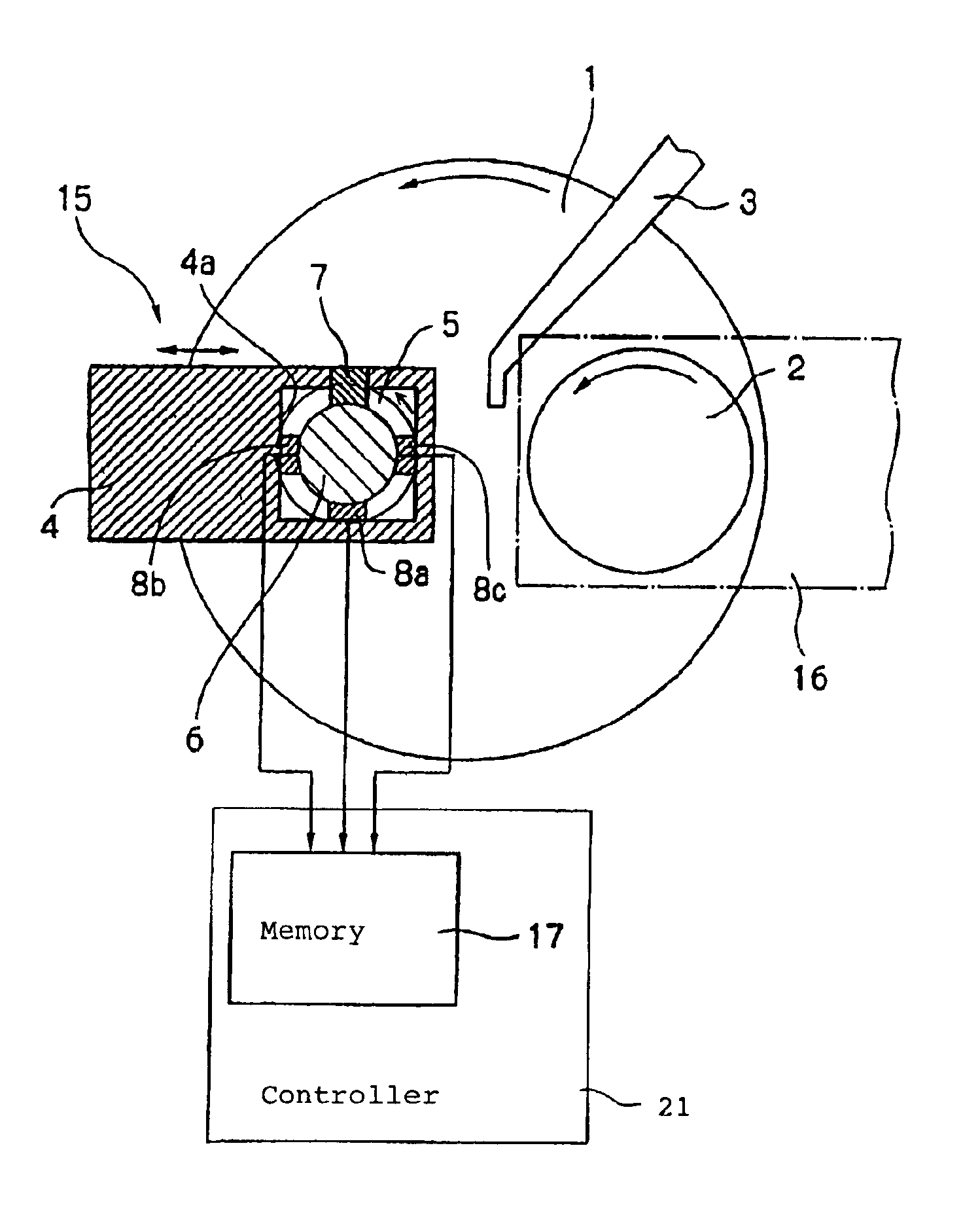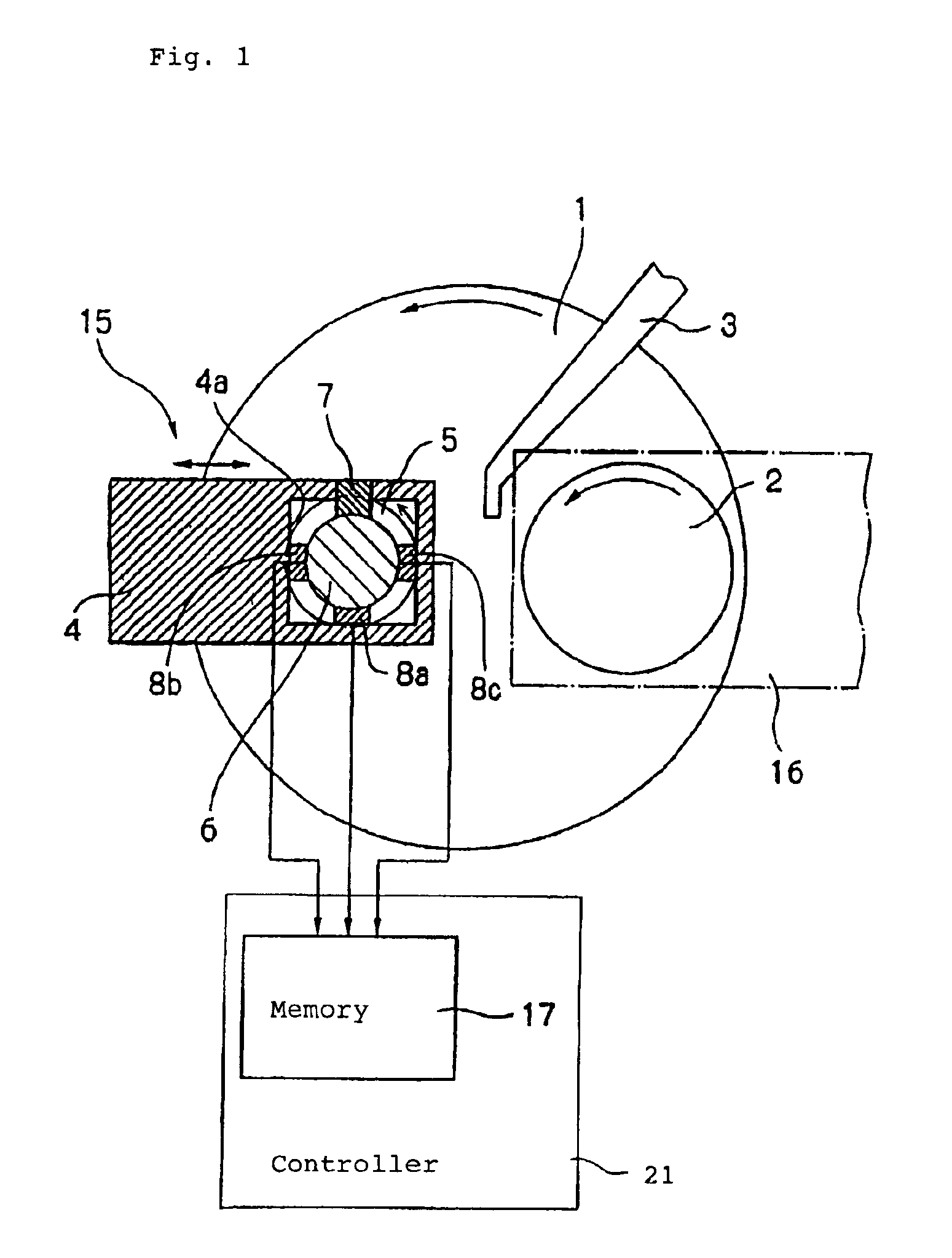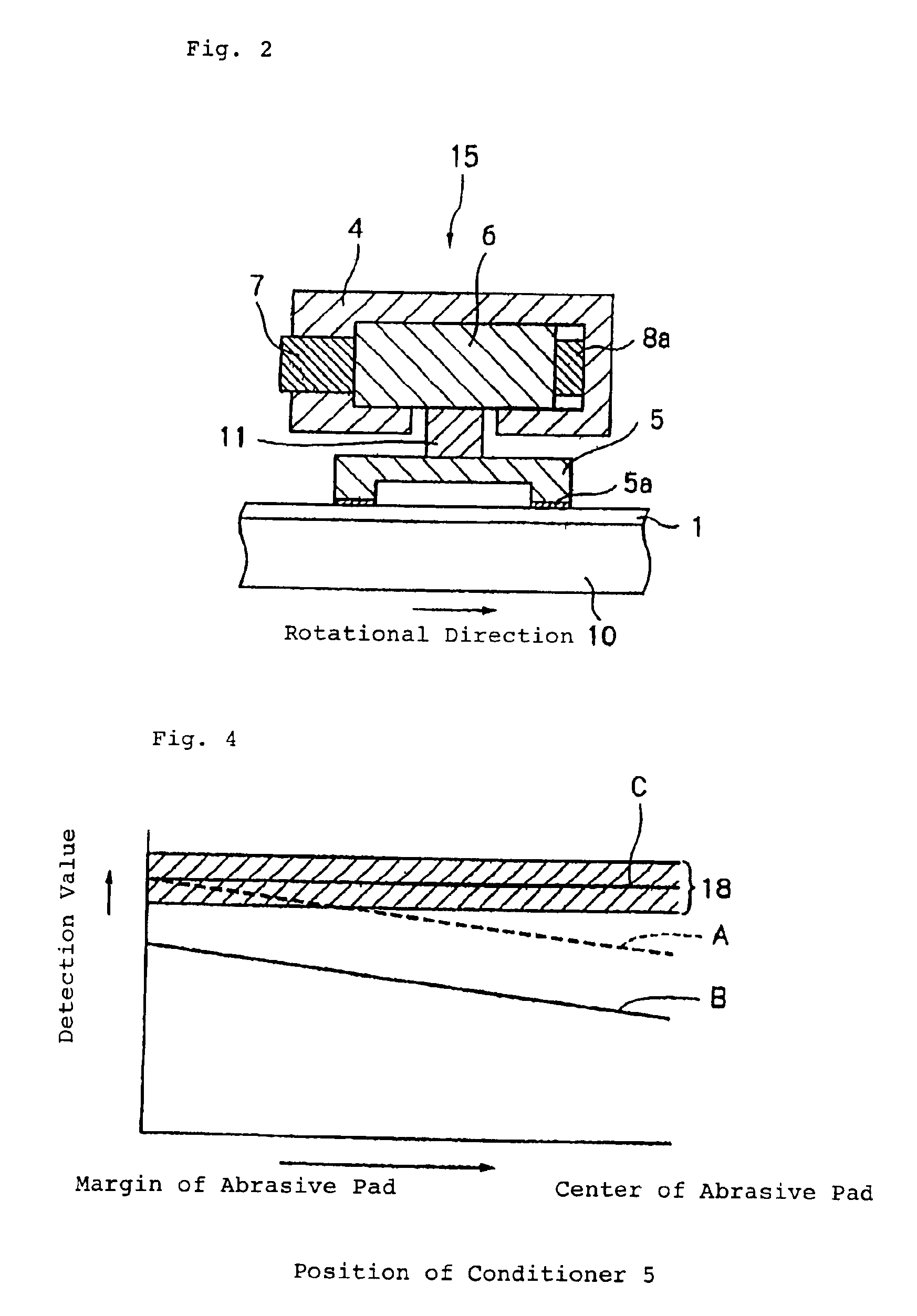Wafer polishing method and wafer polishing apparatus in semiconductor fabrication equipment
- Summary
- Abstract
- Description
- Claims
- Application Information
AI Technical Summary
Benefits of technology
Problems solved by technology
Method used
Image
Examples
first embodiment
[0028]The wafer polishing apparatus of the first embodiment of the present invention will be described below referring to FIGS. 1 and 2. FIG. 1 is a top view of the wafer polishing apparatus of the first embodiment. The wafer polishing apparatus has a circular platen 10, an abrasive pad 1 attached onto the platen 10, a wafer holding head 16 provided so as to face one part of the platen 10, a conditioning mechanism 15 provided so as to face the other part of the platen 10, and a nozzle 3. The abrasive pad 1 is made of elastic polyurethane or the like. The wafer holding head 16 holds the back surface of a wafer 2. The nozzle 3 supplies deionized water or slurry between the abrasive pad 1 and wafer 2. The conditioning mechanism 15 has a cantilever-shaped arm 4, a conditioner driving unit 6, a conditioner 5 held by the conditioner driving unit 6, a fixing jig 7, and three pressure detectors 8a to 8c. The arm 4 is able to relatively move against the platen 10. A diamond 5a is attached to...
second embodiment
[0043]Then, a second embodiment of the present invention will be described below referring to FIG. 5. A portion same as that of the first embodiment is provided with the same reference number and its description is omitted.
[0044]A conditioning mechanism 19 of this embodiment is constituted so that a rotating shaft 11 for connecting a conditioner 5 with a conditioner driving unit 6 is supported by an upper rotation bearing 12 and a lower rotation bearing 13 in order to further improve the detection sensitivity. The upper rotation bearing 12 is fixed to the conditioner driving unit 6 and an arm 4 by screws. The lower rotation bearing 13 is connected to the arm 4 through a piezoelectric element serving as a pressure detector 20 by a lower rotation bearing fixing plate 14. A force working on the conditioner 5 under conditioning is obtained by detecting the deflection of the rotating shaft 11 by the pressure detector 20 between the lower rotation bearing fixing plate 14 and the lower rot...
PUM
| Property | Measurement | Unit |
|---|---|---|
| Force | aaaaa | aaaaa |
Abstract
Description
Claims
Application Information
 Login to View More
Login to View More - R&D
- Intellectual Property
- Life Sciences
- Materials
- Tech Scout
- Unparalleled Data Quality
- Higher Quality Content
- 60% Fewer Hallucinations
Browse by: Latest US Patents, China's latest patents, Technical Efficacy Thesaurus, Application Domain, Technology Topic, Popular Technical Reports.
© 2025 PatSnap. All rights reserved.Legal|Privacy policy|Modern Slavery Act Transparency Statement|Sitemap|About US| Contact US: help@patsnap.com



